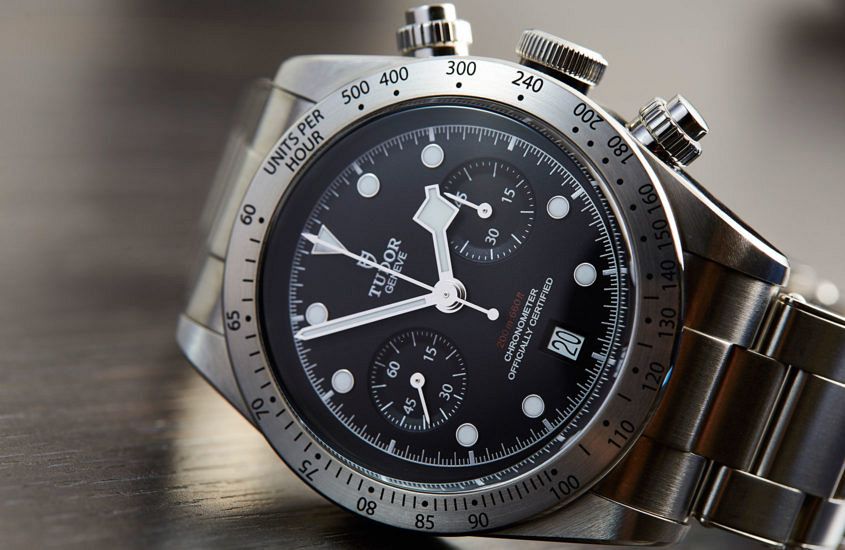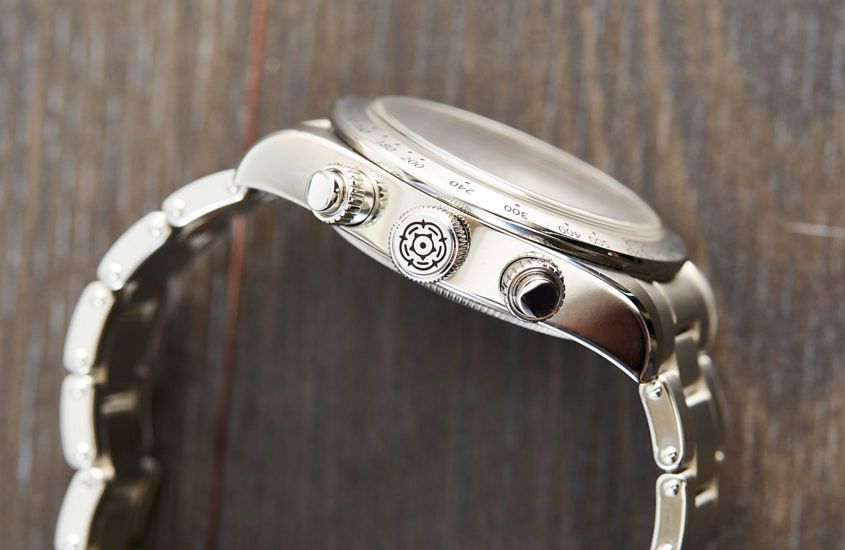The case
The 41mm steel case Tudor replica watches of the BB Chrono is at once familiar and unfamiliar. The shape and high, slab-like sides are classic Black Bay, but the additional pushers and tachymetre bezel are new to the family and quite unfamiliar. Except that they’re kind of not. If you punch “Tudor 79180” into Google you’ll find countless examples of the ‘Big Block’ chronograph, first introduced in 1976 (six years after their first chronograph, the Prince Oysterdate) which shares the engraved steel bezel and those fluted, screw-down chronograph pushers. So while the bezel and pushers may not be design details featured on recent Tudor watches, they’re certainly a prominent part of their history. One detail that’s a key part of the historic models but absent on this release is a crown guard. I understand it might be messing with the Black Bay design codes a little too much, but I really think that a crown guard would have given a more pleasing visual symmetry to the case design and a neater look to the chronograph pushers, especially when they’re fully unscrewed. The case is rated to 200m, as per usual.

The dial
Like the case, the dial of the BB Chrono is a mix of old and new. The snowflake hour hands are very much in evidence, although in a slightly slimmed down form to allow for greater chronograph legibility. The applied ‘dot’ markers are still on the scene too, though the baton-like 3,6,9, markers have disappeared, replaced by subdials and a date. The subdials – plainly printed and slightly recessed – are nicely executed and well proportioned. The left is running seconds and the right is a 45 minute counter. There’s a date at six, on a white disk neatly recessed in the matt black dial Tudor fake watches. And while many people find dates jarring, I actually think the pop of white adds some nice balance and works better than a lone, large hour marker would.

The movement
All right, the movement. When Tudor replica watches first announced this watch at Baselworld there was much surprise. When they announced it was powered by the MT5813, a COSC certified column wheel movement with a vertical clutch, the mood moved from surprised to stunned. There’s a reason so many brands rely on a handful of proven chronograph movements — they’re hard to make. Take Rolex for example. They released their first in-house automatic chronograph movement – the calibre 4130 – in 2000. Once the wonder had worn off, it was revealed that while the MT5813 included significant Tudor technology – the escapement, silicon balance spring and rotor, for example – a substantial amount of the architecture is supplied by Breitling and based on their impressive B01, first released in 2009.
All right, the movement. When Tudor first announced this watch at Baselworld there was much surprise. When they announced it was powered by the MT5813, a COSC certified column wheel movement with a vertical clutch, the mood moved from surprised to stunned. There’s a reason so many brands rely on a handful of proven chronograph movements — they’re hard to make. Take Rolex for example. They released their first in-house automatic chronograph movement – the calibre 4130 – in 2000. Once the wonder had worn off, it was revealed that while the MT5813 included significant Tudor technology – the escapement, silicon balance spring and rotor, for example – a substantial amount of the architecture is supplied by Breitling and based on their impressive B01, first released in 2009.